
NANJING EFG CO., LTD., expert of wateproof frame materials
Aerogel is a diverse class of ultralow synthetic material derived from a gel, in which the liquid component of the gel is replaced with gas by supercritical drying. It is composed of an interconnected nanostructure network with minimum 50% porosity. Though solid, it is extremely lightweight and possesses low thermal conductivity, which makes it an ideal insulation material.
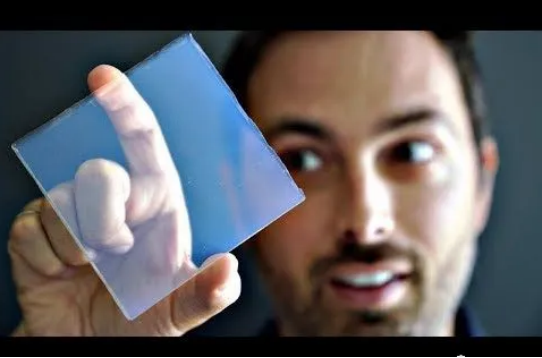
The aerogel market size is estimated to be USD 453.0 million in 2017 and is projected to reach USD 785.4 million by 2022, at a CAGR of 11.6% between 2017 and 2022.

The report segments the global aerogel market by raw material into silica, carbon, alumina, and others. The market is categorized by form into a blanket, particle/powder, blocks, and panel. Applications include building insulation, oil & gas, aerospace, automotive, health care, chemical, electronics, apparel, and others. Region-wise, the market is analyzed across North America, Europe Asia-Pacific, and LAMEA.
Key Market Segments
By Raw Material
Silica
Carbon
Alumina
Others
By Form
Blanket
Particle/Powder
Block
Panel
By Application
Building Insulation
Oil & Gas
Aerospace
Automotive
Healthcare
Chemical
Electronics
Other
By Region
North America
Europe
Asia-Pacific
LAMEA
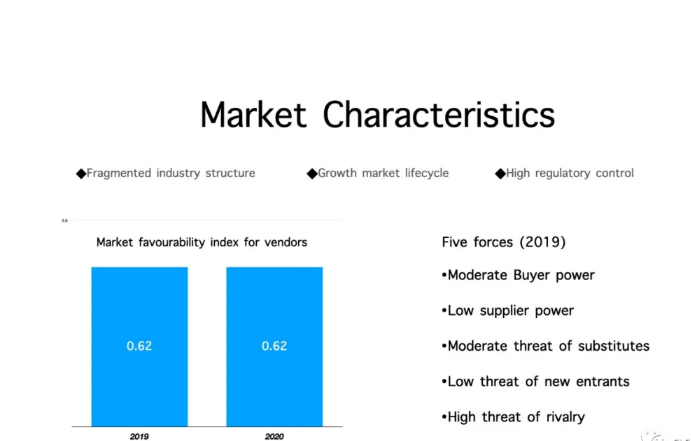
Global Aerogel Market, By Raw Material
In 2019, the silica aerogel segment garnered the highest share of 69% in the global market. This is attributed to the fact that aerogels possess enhanced heat insulation properties and characteristics such as lightweight, chemically inertness, and reusability of silica aerogel.
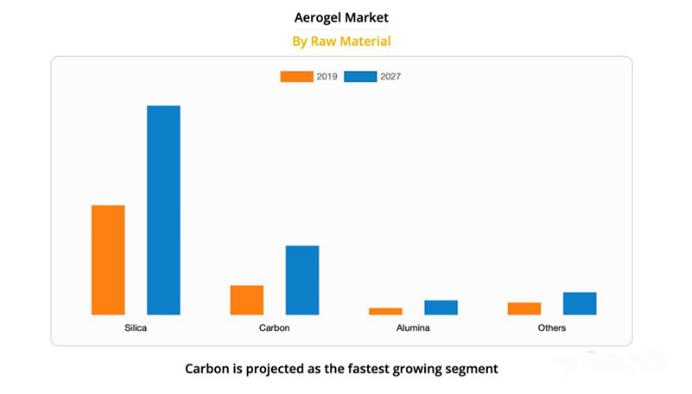
Aerogel Market, By Region
North America dominated the market in 2019, accounting for a market share of 39.1%, owing to a rise in consumer awareness toward global warming, which, in turn, boosts the adoption of insulation solutions such as aerogel in industrial and domestic applications such as buildings and oil & gas refineries.
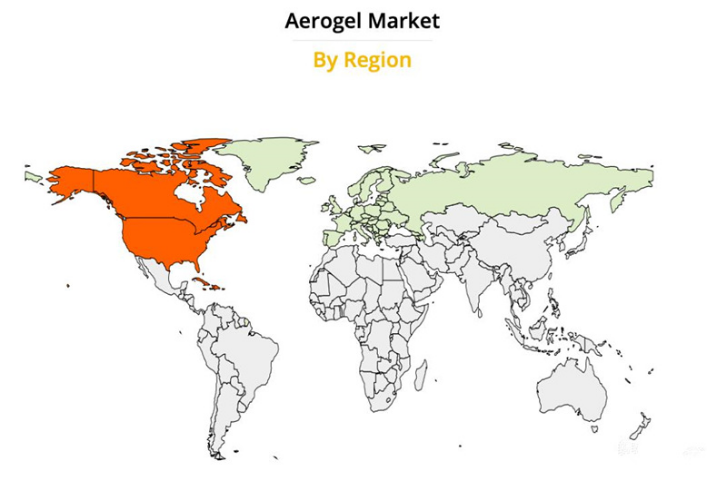
Global Aerogel Market, By Form
In 2019, the blanket was the largest revenue generator, accounting for a share of 69% in the global aerogel market, owing to its increase in use in building insulation and the oil & gas industry.
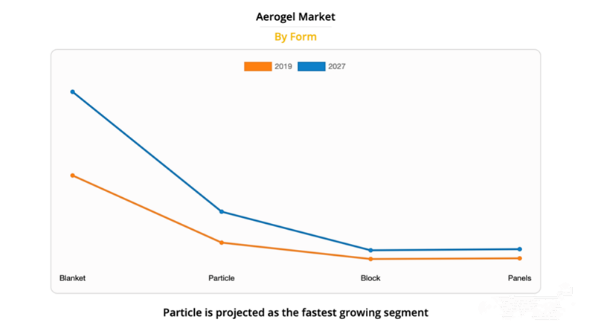
In 2019, oil & gas was the highest revenue generator, accounting for a market share of 56%. This is attributed to the chemical inertness and lower heat conductance of aerogel, which make it a suitable material for pipeline insulation.
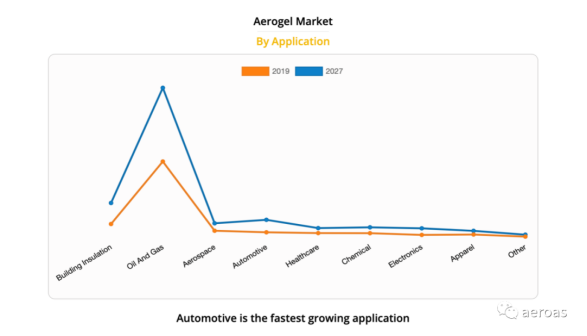
Market Dynamics
Superior thermal resistance
Aerogels have a thermal efficiency that is 2–4 times higher than that of conventional insulation materials such as glass-filled foams, fibers, and metals. In addition, water- repellent/waterproof characteristic makes aerogel ideal for external insulation in various applications. The superior thermal resistance of aerogel materials shows huge potential in the oil & gas and petrochemical industries where insulation is of prime importance. A large volume of oil and gas is transported from sea to port through pipelines. To meet the increasing demand for natural gas, developing countries are planning an offshore delivery of LNG for secure handling and safety purposes. One of the major challenges faced for this purpose is to withstand a tough sea environment. This is particularly in the case of crude oil when it comes out of the subsea well at a temperature higher than the seawater. If the temperature of oil cools down, the pipelines no longer remain operative. On the other hand, LNG needs to be in liquid form until it reaches onshore regasification terminals. Cellular glass and polyurethane foam were commonly used to insulate these pipelines. These traditional materials have low thermal resistance as compared to aerogel. In addition to superior thermal performance, aerogel materials are hydrophobic and also show significant resistance to flame and weather.
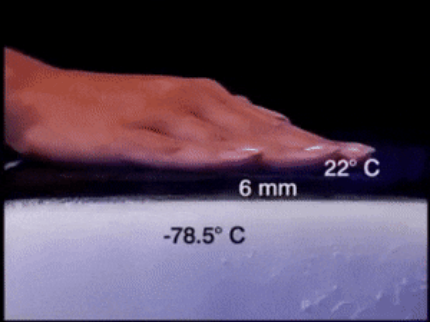
Thinner and lighter alternative
Several countries are working toward minimizing their energy consumption. For example, South Korea has made it mandatory to increase the insulation level of buildings by 20%. Similarly, the International Code Council responsible for building energy efficiency standards in the US updated the 2012 International Energy Conservation Code (IECC). Among other changes, the update contains more stringent specifications for insulation in new buildings. In Europe too, there are stringent regulations for building insulation standards. The demand for insulation materials is expected to rise on a large scale due to the implementation of such standards.

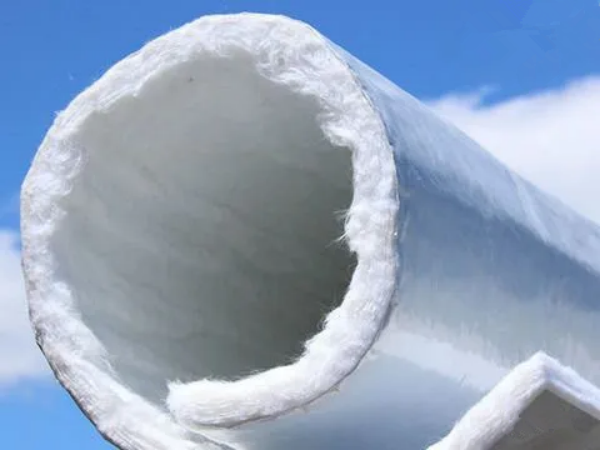
Traditional insulation materials such as polyurethane foam, mineral wool, rock wool, and stone wool have certain drawbacks. For example, thick layers of these materials are required to achieve the desired R-value, which results in loss of valuable floor space in case of new construction. For old buildings, it is even tougher to introduce a high insulation level, as extra layers lead to changes in the aesthetic appearance of a house. Hence, to fulfill energy standards set by various regulatory bodies and to avoid structural compromises in new constructions, aerogels are projected to be an ideal replacement for traditional insulation materials. Owing to its low thermal conductivity and less thickness, aerogel materials can save a substantial amount of energy which otherwise would have been used for heating and cooling purposes. Aerogels are used for apparel in the cold region due to its properties such as low weight and low thermal conductivity. They are also widely used for industrial insulation.
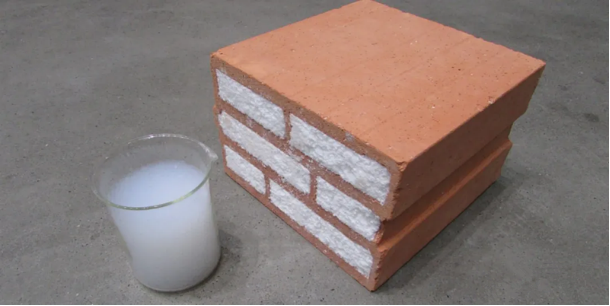
Aerogel is a reusable material that can be used consecutively for a chain of applications and can be disposed of safely after the completion of its life cycle. For example, aerogel blankets used for building insulation applications can be reused by processing them as composites or additives for other applications. Growing public and government awareness about environmentally friendly insulating materials is also expected to increase the demand for aerogel. Discarded traditional insulation materials may pose a threat to the surrounding environment by releasing toxins. In addition, the useful land is occupied by dumped insulation materials. Most of the traditional insulating materials are non-recyclable and non-biodegradable. In contrast, aerogels can be reused as composites and additives in applications such as soil conditioners, fertilizers, and performance coatings.
According to Cabot Corporation, its product called Lumira aerogel has been rated as Silver in Cradle to Cradle SM Certification from McDonough Braungart Design Chemistry (US). This certification involves examining a product’s manufacturing and ecological impact to know if the product’s wastes are being entirely eliminated in agreement with a healthy and sustainable society. According to Aspen Aerogels, aerogel blankets also have zero ozone-depleting potential (ODP) which means the amount of degradation a chemical compound can cause to the ozone layer. Aerogel has a global warming potential (GWP) of less than five. Aerogel is in compliance with several standards of regulations in the European Union, such as Regulation, Evaluation, Authorisation and the Restriction of Chemicals (REACH) and Restriction of Substances Directive (RoHS). Thus, aerogel is a much safer alternative to conventional insulation materials.
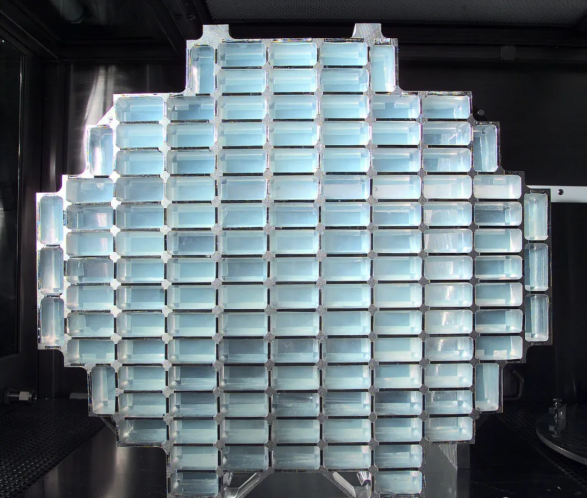
Pre-flight Stardust Dust Collector with aerogel from NASA
High manufacturing cost
The high production cost of aerogel is one of the major restraints that affect the growth of the aerogel market. The production cost of silica aerogels is primarily linked to three main factors. These include the high cost of raw materials (for alkoxide-based precursor materials), cumbersome process technologies (solvent exchange steps, long reaction times limited by diffusion), and perhaps most importantly, the installation of relatively small production capacities of the companies. The manufacturing of aerogel materials requires extensive R&D which makes the entire process costly. Synthetic methods applied to manufacture aerogel materials are not much versatile. Aerogel manufacturing requires sophisticated facilities as the production mechanisms are highly specialized. The most expensive step in the aerogel manufacturing process is supercritical drying.
The sol-gel is a technique used to dry aerogel material at ambient conditions and later provides chemical treatment to stop its shrinkage. This technology has a slow process, resulting in longer drying times for aerogel. Various efforts have been made to reduce the production cost of aerogels. For example, a research team at Yonsei University (Seoul, South Korea) developed a technology for the rapid expulsion of water from the gel. Through this experiment, 94% porosity was achieved in aerogels, helping speed up the drying process of gels making it less costly. However, factors such as lack of commercialization and low industrial production capacity of this technique are responsible for the high production cost.

Poor mechanical strength.
Though aerogel materials have a high strength-to-weight ratio, they are generally brittle and exhibit poor mechanical strength. It means that aerogel materials can hold (theoretically) 500– 4,000 times of their weight in applied force provided the force is gentle and uniformly applied. Additionally, most aerogels as produced are extremely brittle and fragile (they tend to fragment and pulverize) which makes them difficult for structural applications. Thus, their structures are reinforced to obtain aerogels that are strong enough to withstand mechanical stress.
Silica aerogels can be incorporated into the polymer for enhancement in mechanical strength. Cross-linked polymer aerogels have better mechanical strength than their silica counterparts. However, the processes employed to prepare polymer-reinforced silica aerogels require multiple washing and soaking steps for infiltration of the polymer precursors after gelation and supercritical drying. This makes the entire manufacturing process more complex and costlier, which may hamper the growth of the market. Moreover, due to its low mechanical strength, its use is restricted to applications where its poor mechanical strength does not affect the application. However, the companies such as Aerogel Technologies (US) and BASF (Germany) have been developing mechanically strong aerogel materials. This development may enlarge the applications of aerogel and increase the demand in near future.
New application In energy storage
With a high surface area, the carbon aerogel could be used in hydrogen and electrical energy storage. Most importantly, the energy storage capacity could be improved by manipulating the network structure of carbon aerogel. Moreover, due to such unusual chemical and textural characteristics, it could be used as electrode material in supercapacitors, rechargeable batteries, and advanced catalyst support. An increase in the trend of electric mobility is expected to create growth opportunities for the graphene aerogel-based batteries market. In 2019, a team of researchers in the UK created a graphene aerogel composite anode material as part of their battery development program. They concluded that graphene-containing aerogels could be potential candidates for low-cost high-performance composites for energy storage applications. Graphene-containing aerogels could be used in high-performance composite materials for near-future energy storage applications, such as in electric vehicles. Hence, an increase in demand for electric vehicles from both developed and developing nations to curb pollution and to reduce the dependency on conventional fuel usage is expected to create lucrative opportunities for aerogel market growth in the future.
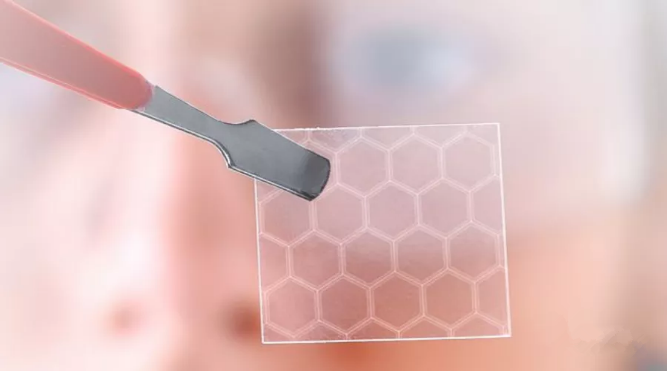
Graphene aerogel batteries promise a new energy storage solution

3D-printed electrodes boost the charge rate and capacity of electrical storage devices.
New application in the apparel market.
Aerogel is finding new applications in the apparel market in the colder regions. Because of their exceptional physical properties, aerogels are used in this sector. For example, a 3mm layer of aerogel can protect the human body at a severe temperature of -50°C. This would result in much lighter clothing in cold regions than those available at present. It will be beneficial to mountaineers who usually carry heavy luggage to protect themselves from adverse conditions. Other factors such as fire & water resistance, thermal resistance, and flexibility make aerogel a preferred material for clothing application. Apart from apparel, it is also used in different applications such as footwear, jackets, tents, and other outdoor gear used in extreme climates for insulation.

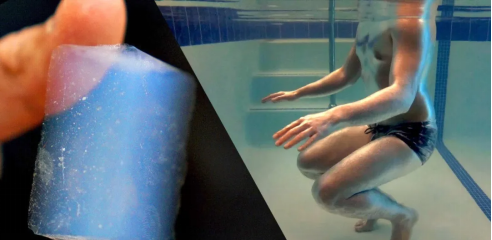
waterproof yourself with aerogel
Source: aeroas
Copyright © 2019 NANJING EFG CO., LTD. | All Rights Reserved
We are here to help you! If you close the chatbox, you will automatically receive a response from us via email. Please be sure to leave your contact details so that we can better assist